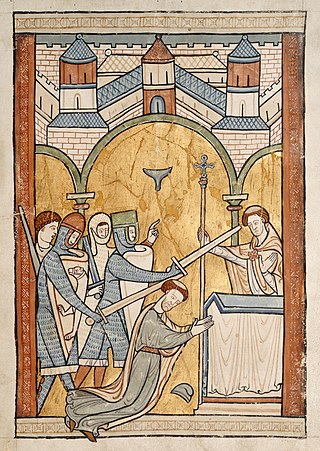
Thomas Becket, also known as Saint Thomas of Canterbury, Thomas of London and later Thomas à Becket, served as Lord Chancellor from 1155 to 1162, and then notably as Archbishop of Canterbury from 1162 until his death in 1170. He engaged in conflict with Henry II, King of England, over the rights and privileges of the Church and was murdered by followers of the King in Canterbury Cathedral. Soon after his death, he was canonised by Pope Alexander III. He is venerated as a saint and martyr by the Catholic Church and the Anglican Communion.

Henry IV, also known as Henry Bolingbroke, was King of England from 1399 to 1413. His grandfather King Edward III had claimed the French throne as a grandson of Philip IV of France, and Henry continued this claim. He was the first English ruler since the Norman Conquest, over three hundred years prior, whose mother tongue was English rather than French.

Victoria was Queen of the United Kingdom of Great Britain and Ireland from 20 June 1837 until her death in 1901. Her reign of 63 years and 216 days is known as the Victorian era and was longer than any of her predecessors. It was a period of industrial, political, scientific, and military change within the United Kingdom, and was marked by a great expansion of the British Empire. In 1876, the British Parliament voted to grant her the additional title of Empress of India.

Edward George Geoffrey Smith-Stanley, 14th Earl of Derby,, known as Lord Stanley from 1834 to 1851, was a British statesman and Conservative politician who served three times as Prime Minister of the United Kingdom. To date, he is the longest-serving leader of the Conservative Party. He is one of only four British prime ministers to have three or more separate periods in office. However, his ministries each lasted less than two years and totalled three years and 280 days. Derby introduced the state education system in Ireland, and reformed Parliament.

Gathorne Gathorne-Hardy, 1st Earl of Cranbrook, was a prominent British statesman and Conservative politician. He held cabinet office in every Conservative government between 1858 and 1892, serving as Home Secretary from 1867 to 1868, Secretary of State for War from 1874 to 1878, Lord President of the Council from 1885 to 1886 and as Chancellor of the Duchy of Lancaster until 1886. In 1878, he was appointed Secretary of State for India, and thereafter ennobled and entered the House of Lords as Viscount Cranbrook.

Gladstone is a coastal city in the Gladstone Region, Queensland, Australia. Gladstone has an urban population of 34,703, and together with Boyne Island and Tannum Sands, had an estimated population of 50,317 at August 2021. This urban area covers 246.1 km2 (95.0 sq mi).

Derby Museum and Art Gallery is a museum and art gallery in Derby, England. It was established in 1879, along with Derby Central Library, in a new building designed by Richard Knill Freeman and given to Derby by Michael Thomas Bass. The collection includes a gallery displaying many paintings by Joseph Wright of Derby; there is also a large display of Royal Crown Derby and other porcelain from Derby and the surrounding area. Further displays include archaeology, natural history, geology, military collections and world cultures. The Art Gallery was opened in 1882.
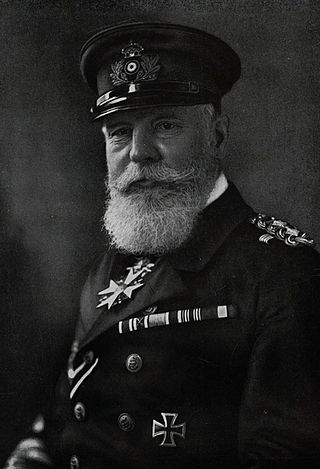
Henning Rudolf Adolf Karl von Holtzendorff was a German admiral during World War I, who became famous for his December 1916 memo about unrestricted submarine warfare against the United Kingdom. He was a recipient of Order of the Black Eagle and the Pour le Mérite with oak leaves and was one of just six Grand Admirals of the Imperial German Navy.

The Royal Crown Derby Porcelain Company is the oldest or second oldest remaining English porcelain manufacturer, based in Derby, England. The company, particularly known for its high-quality bone china, having produced tableware and ornamental items since approximately 1750. It was known as 'Derby Porcelain' until 1773, when it became 'Crown Derby', the 'Royal' being added in 1890.
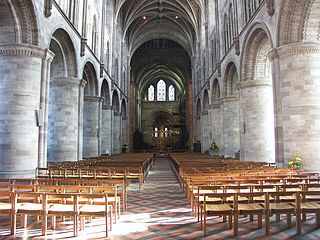
Gilbert Foliot was a medieval English monk and prelate, successively Abbot of Gloucester, Bishop of Hereford and Bishop of London. Born to an ecclesiastical family, he became a monk at Cluny Abbey in France at about the age of twenty. After holding two posts as prior in the Cluniac order he was appointed Abbot of Gloucester Abbey in 1139, a promotion influenced by his kinsman Miles of Gloucester. During his tenure as abbot he acquired additional land for the abbey, and may have helped to fabricate some charters—legal deeds attesting property ownership—to gain advantage in a dispute with the Archbishops of York. Although Foliot recognised Stephen as the King of England, he may have also sympathised with the Empress Matilda's claim to the throne. He joined Matilda's supporters after her forces captured Stephen, and continued to write letters in support of Matilda even after Stephen's release.
Gerald Gladstone was a Canadian sculptor and painter.
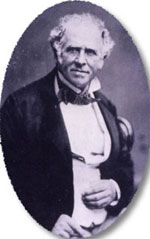
Lieutenant Colonel George Barney was a military engineer of the Corps of Royal Engineers and became Lieutenant Governor of the Colony of North Australia.

William Duesbury (1725–1786) was an English enameller, in the sense of a painter of porcelain, who became an important porcelain entrepreneur, founder of the Royal Crown Derby and owner of porcelain factories at Bow, Chelsea, Derby and Longton Hall.
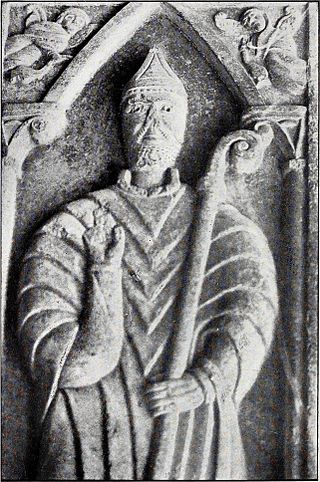
Bartholomew of Exeter was a medieval Bishop of Exeter. He came from Normandy and after being a clerk of the Archbishop of Canterbury, was made Archdeacon of Exeter in 1155. He became Bishop of Exeter in 1161. Known for his knowledge of canon law, he was involved in the Becket controversy after the appointment of Thomas Becket as Archbishop of Canterbury. After Becket's death, although he was frequently at the royal court, he mainly attended to his diocese. A number of works by him survive, including sermons and treatises on law and theology.
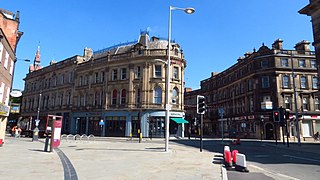
Derby is a city and unitary authority area on the River Derwent in Derbyshire, England. The county is named after Derby, which was its original county town. As a unitary authority, Derby is administratively independent from Derbyshire County Council. The city's population was 261,400 in 2021.

Benjamin Vulliamy, was a British clockmaker responsible for building the Regulator Clock, which, between 1780 and 1884, was the main timekeeper of the King's Observatory Kew and the official regulator of time in London. In 1773 Vulliamy had received a Royal Appointment as the King's Clockmaker.

Richard Barre was a medieval English justice, clergyman and scholar. He was educated at the law school of Bologna and entered royal service under King Henry II of England, later working for Henry's son and successor Richard I. He was also briefly in the household of Henry's son Henry the Young King. Barre served the elder Henry as a diplomat and was involved in a minor way with the king's quarrel with Thomas Becket, which earned Barre a condemnation from Becket. After King Henry's death, Barre became a royal justice during Richard's reign and was one of the main judges in the period from 1194 to 1199. After disagreeing with him earlier in his career, Barre was discharged from his judgeship during John's reign as king. Barre was also archdeacon of Ely and the author of a work of biblical extracts dedicated to one of his patrons, William Longchamp, the Bishop of Ely and Chancellor of England.

Berkhamsted Castle is a Norman motte-and-bailey castle in Berkhamsted, Hertfordshire. The castle was built to obtain control of a key route between London and the Midlands during the Norman conquest of England in the 11th century. Robert of Mortain, William the Conqueror's half brother, was probably responsible for managing its construction, after which he became the castle's owner. The castle was surrounded by protective earthworks and a deer park for hunting. The castle became a new administrative centre of the former Anglo-Saxon settlement of Berkhamsted. Subsequent kings granted the castle to their chancellors. The castle was substantially expanded in the mid-12th century, probably by Thomas Becket.
Crystal Fountains Inc., known as Crystal, is a water feature design and product manufacturing firm based in Toronto, Ontario, Canada. Founded in 1967, Crystal has completed thousands of projects worldwide, spread over 6 continents in over 30 countries. The company is best known for its work on the Crown Fountain in Millennium Park, Chicago, Illinois and the water feature at Washington Harbour in Georgetown, just outside Washington D.C.
South Gladstone is a suburb of Gladstone in the Gladstone Region, Queensland, Australia. In the 2021 census, South Gladstone had a population of 3,476 people.

















